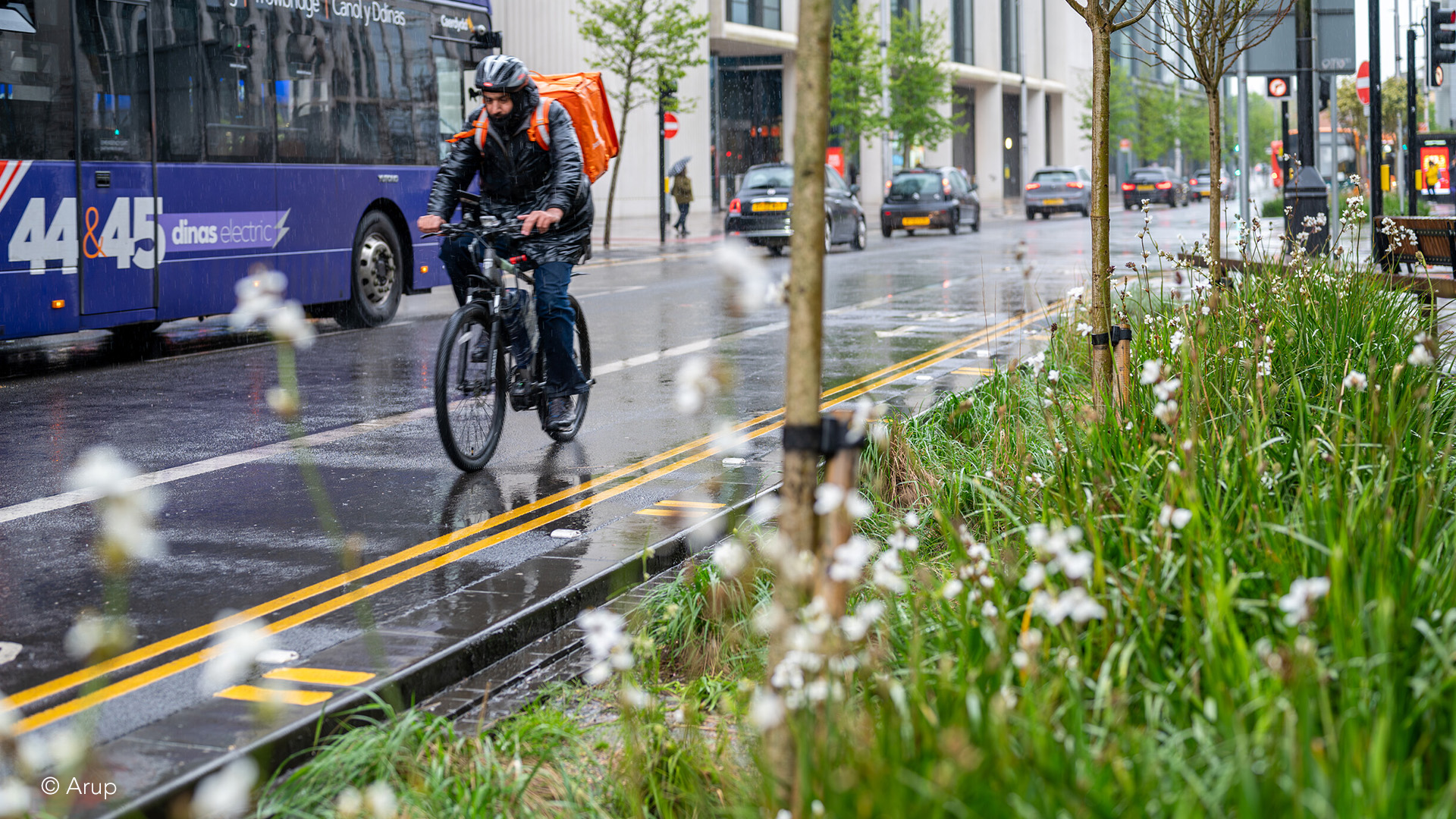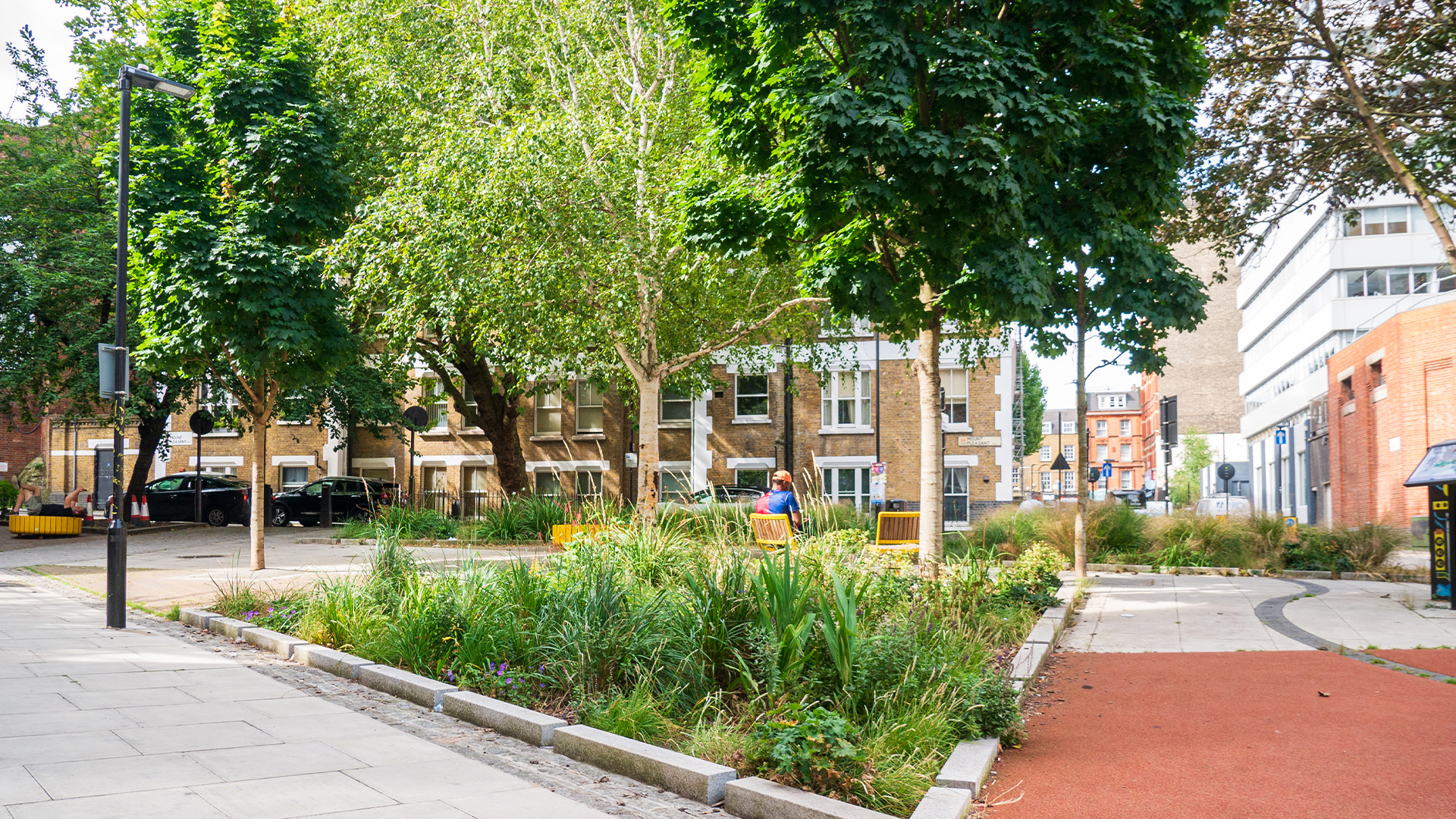The introduction of new national standards for Sustainable Drainage Systems (SuDS) marks a significant step forward in the way water management is addressed in urban development. This regulatory update reinforces the growing consensus among industry professionals that effective drainage solutions must work with natural processes, not against them.
In the UK, Sustainable Drainage Systems (SuDS) have long been recognised as an important component of effective water management. Their role was formalised through the Flood and Water Management Act 2010, which gave Lead Local Flood Authorities (LLFAs) responsibility for managing local flood risk, including surface water. This was reinforced by the 2014 Ministerial Statement, which set the expectation that SuDS should be included in major developments.
While the policy framework has been in place for over a decade, practical implementation has often varied, with inconsistencies in enforcement and delivery across local planning authorities. The new national standards address this critical gap, providing the regulatory clarity and technical guidance necessary to help ensure consistent, high-quality implementation across the development sector.
The Drivers of Change
The urgency driving these regulatory changes reflects the mounting environmental pressures facing our urban spaces. Climate change is intensifying rainfall patterns, creating more frequent extreme weather events that overwhelm traditional drainage systems. Simultaneously, ongoing urbanisation continues to reduce the natural capacity for water absorption, increasing surface water runoff.
Perhaps most concerning is the biodiversity loss that threatens the natural systems which have historically managed our water cycles. These converging pressures have exposed the limitations of the traditional approach of channelling water away as quickly as possible using pipes. In an era of increasing environmental uncertainty, this method alone is no longer sufficient to manage flood risk, water quality, and urban resilience. A more integrated approach is now essential, one that rethinks how water is managed within the built environment by working with natural processes rather than against them.

Redefining Flood Risk Management Through Natural Processes
The cornerstone of the new standards lies in their requirement for on-site water retention, fundamentally challenging the conventional ‘pipe it away’ mentality. By mimicking natural drainage processes, nature-based SuDS transform both flood resilience and site character. Green infrastructure elements like tree pits and rain gardens serve as landscape features that slow, store, and gradually release rainwater, reducing peak flows that would otherwise overwhelm downstream systems.
This shift towards managing runoff at source reflects a significant evolution in surface water management practice. Instead of relying on conventional systems that transfer flood risk downstream, new developments are now expected to manage their hydrological impact on-site. This approach helps attenuate flows, improve water quality and reduce reliance on the UK’s ageing sewer networks, many of which were not designed to cope with the scale of today’s urban development or the intensity of modern rainfall events.
By slowing, storing, and treating runoff closer to where it falls, SuDS contribute to more resilient communities that are better prepared for the increasing frequency of extreme weather events. This represents a fundamental shift from reactive flood management to proactive water stewardship.
Water Quality as Environmental Stewardship
Beyond flood management, the updated regulations place significant emphasis on water quality treatment, recognising that every surface that sheds water contributes pollutants to our waterways. From car parks to rooftops, urban surfaces generate contaminated runoff that traditionally flows untreated into receiving waters. The new standards require developers to address this contamination at source through interventions that capture and break down contaminants before they reach waterways.
This treatment-at-source approach delivers benefits that extend far beyond individual developments. By intercepting pollutants like oil, heavy metals and sediment, properly designed SuDS contribute to watershed health and support the UK’s obligations under the EU-derived Water Framework Directive to prevent water quality deterioration and achieve ‘good’ ecological status.
When applied as part of a SuDS treatment train, where multiple linked interventions manage water quantity and quality in sequence, these systems have been shown to measurably improve downstream water quality across entire catchments. This demonstrates how environmental stewardship can be effectively integrated into the development process at scale, creating cumulative benefits that extend well beyond individual project boundaries.
Placemaking Through Integrated Design
A particularly important feature of the new standards is their emphasis on ensuring that SuDS contribute positively to the quality of place. Drainage infrastructure is no longer regarded solely as a functional necessity to be hidden from view. The new regulations support its integration into the public realm, promoting solutions that deliver multiple benefits, including flood management, environmental enhancement, and contributions to social and placemaking objectives.
Through careful design, raingardens become focal points for neighbourhoods, areas with tree canopies provide amenity space and habitat, and landscaped basins transform into recreational areas during dry periods. This multi-functional approach maximises the value extracted from every square metre of development while creating spaces that residents actively engage with and value. The result is infrastructure that delivers practical flood management while providing amenity value throughout its operational life.

Biodiversity Integration and Habitat Creation
The new standards explicitly recognise SuDS as vehicles for biodiversity enhancement, moving beyond their traditional role as purely functional infrastructure. By prioritising vegetated systems and habitat creation, drainage infrastructure becomes part of the green network that supports urban wildlife. Native species selection and pollinator-friendly designs transform SuDS into thriving ecosystems that support birds, insects and amphibians.
This ecological integration delivers benefits that compound over time, creating systems that improve with age rather than deteriorate. As vegetation establishes and matures, treatment performance improves, habitat value increases, and visual amenity enhances. The standards’ emphasis on biodiversity net gain (BNG) means that developments can contribute positively to local ecological targets while meeting their drainage obligations, demonstrating how regulatory requirements can drive innovation and environmental improvement simultaneously.
Resource Efficiency Through Rainwater Harvesting
Water security is increasingly recognised as a critical infrastructure challenge, and the new standards acknowledge SuDS potential contribution to resource efficiency. Standard 1 requires a strict runoff hierarchy that prioritises sustainable destinations, such as infiltration and rainwater reuse, before considering discharge to sewers. This approach validates rainwater harvesting as a mainstream SuDS technique rather than an optional extra.
Rainwater harvesting reduces demand on mains water supply while providing resilience during drought periods. This dual benefit is particularly valuable in water-stressed regions where every litre conserved reduces pressure on resources. The integration of harvesting with drainage creates systems that capture value from what was previously considered waste, transforming rainfall from a problem to be managed into a resource to be utilised.
Long-Term Performance and Stewardship
Perhaps the most significant innovation in the new guidance is its emphasis on whole-life performance and maintenance planning. SuDS effectiveness depends not just on initial design quality, but on sustained stewardship throughout their operational life. The standards now require developers to demonstrate how systems will be maintained, funded, and managed over the long term.
This shift towards long-term thinking addresses the assumption that natural systems require no intervention. While well-designed SuDS are indeed more resilient than conventional drainage systems, they still require appropriate maintenance to deliver optimal performance throughout their design life. The requirements for adoption arrangements and management plans ensure that this reality is addressed from the project’s outset.

A Structured Framework for Implementation
The new standards aim to increase the provision and consistency of SuDS by creating clearer expectations for new developments. While the standards stop short of mandating SuDS outright, they provide a structured and enforceable foundation for their wider adoption across the sector.
Standard 1 introduces a clear hierarchy for prioritising runoff destinations, encouraging the use of sustainable outflows where possible and providing developers with a logical decision-making framework. Standards 2 to 7 set out fixed minimum design, construction, maintenance, and operational criteria for surface water drainage systems, removing the ambiguity that has previously affected consistent implementation.
Each standard is supported by detailed requirements that clarify the level of obligation, providing both the technical guidance and regulatory clarity necessary to support consistent, high-quality implementation. This structured approach hopes to ensure that SuDS delivery becomes predictable and professional, moving beyond ad-hoc implementation to systematic integration into development practice.
A Fundamental Shift in Development
The new national SuDS standards signal a fundamental shift in how developers conceive the relationship between development and environment. Rather than viewing water management as an engineering challenge to be solved through pipes and pumps, these standards embrace the resilience of natural systems. They validate the understanding that the most effective drainage solutions are those that work with natural processes rather than against them. As SuDS become standard practice rather than an innovative exception, urban environments are being shaped to better handle climate uncertainty while delivering green infrastructure that supports both wellbeing of residents and ecological health.
The regulatory shift demonstrates that environmental resilience, community benefit, and economic value are not competing priorities, but complementary outcomes of well-considered design. This holistic approach to development represents an investment in long-term resilience, proving that environmental stewardship and high-quality development are not only compatible, but mutually reinforcing.

